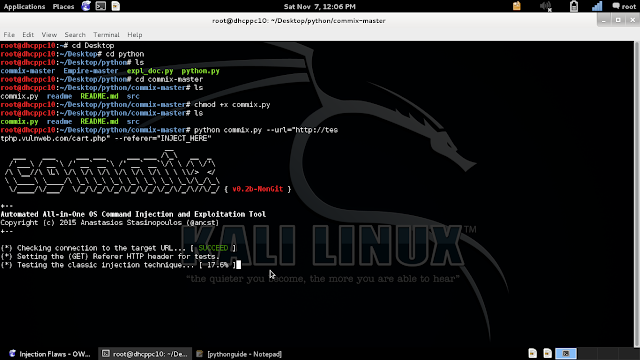HTTP.sys Denial of Service (MS15-034 /CVE-2015-1635) Range Header Integer Overflow.
The
vulnerability is due to crafted HTTP request by passing large value in
Range header, IIS fails to validate the value properly leading to Denial
of Service (Unresponsive or Blue Screen of Death) and possible Code
Execution.
To trigger the vulnerability request a resource which must
be present on the IIS web server, I used sample files (img.jpg,
index.html in this demo.)
To understand the risk it is import to know what HTTP.sys does. Here is what Microsoft’s documentation has to say about it.
According
to the published Microsoft Security Bulletin, MS15-034 is a remote code
execution vulnerability caused by HTTP.sys improperly parsing specially
crafted HTTP requests. Specifically this exploit can be triggered using
the Range header of an HTTP request, causing an Integer overflow. While
the bulletin indicates Remote Code Execution is possible (and as such
rates this vulnerability as Critical), so far I have only been able to
generate a Denial of Service condition and have not yet seen any RCE
code in the wild (though I’m sure someone is working hard at it). Before
I get into the details of the vulnerability, let’s take a quick look at
HTTP.sys and its purpose.
Range Header:
This
vulnerability can be triggered via the Range header. The Range header is
used in an HTTP request to return a portion (or range of bytes) of a
given resource. Take for example, the following requests that illustrate
how to obtain a index.html file using the Range header.
HTTP.sys provides the following benefits:
Kernel-mode caching. Requests for cached responses are served without switching to user mode.
Kernel-mode
request queuing. Requests cause less overhead in context switching
because the kernel forwards requests directly to the correct worker
process. If no worker process is available to accept a request, the
kernel-mode request queue holds the request until a worker process picks
it up.
Request pre-processing and security filtering.
Because
the software is running in kernel mode successful exploitation can have
serious consequences for the system. Unlike exploits in user mode
software, kernel mode exploits may bypass memory protections, possibly
allowing an attacker to cause a system crash. Microsoft indicates the
vulnerability could allow remote code execution, and published work
others have does that is currently circulation appears to offer partial
confirmation. If this proves to be true the vulnerability could be used
to obtain system level access.
How it works:
The
vulnerability is very similar to those that have been seen in the Apache
web server in the past. A value is passed to the HTTP Range header that
will over flow the 64-bit integer the software allocates to store it,
when converted from the text of the HTTP request. Normally the Range
header is used by clients to request part of a document. Trigging the
overflow may allow an attacker to cause memory or file access outside
the expected boundaries.
Original PoC was posted on Vulnerability in “HTTP.sys Could Allow Remote Code Execution”.
Proof of concept :
step 1 : kali linux run only system
step 2 : wget --header="range: bytes= 18-18446744073709551615" http://website link



